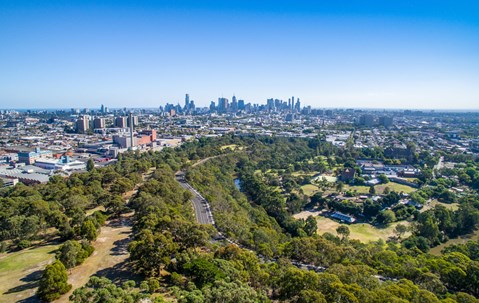News & Tips

When Will the Victorian Land Market Recover?
Since May 2022, when the Reserve Bank of Australia (RBA) first raised interest rates and set in motion one of the most challenging periods in decades for the property development sector, the industry has been waiting for signs that stability and growth are returning.
As we head towards Christmas and the new year, we expect 2024 will be a year of consolidation and transition. If history is any guide, we are unlikely to see a sustained recovery in sales volumes until prices moderate. Although rebates and incentives have become increasingly common in Melbourne over the last year, previous new residential land cycles over the last two decades suggest we could see (gross) prices retreat by 10% to 15%.
Our bold prediction is that by this time next year, we would expect market conditions to have improved markedly, with volumes steadily returning, although still below long-term historical averages and around double current levels. Again, if history is any guide, once volumes start to increase, we would also expect land prices to stabilise and subsequently edge higher. We expect this to occur sometime in the second half of 2024. All other things being equal, we expect a return to solid and sustainable growth in 2025.
While much of the economic, buyer and other data that has helped us form this view still demonstrates the challenges the property sector faces, there are, we believe, enough indications to support the scenario that, over the next year, we will see further consolidation and recovery before a more sustained upswing in 2025.
Interest rates are likely to be lower than they are now by the end of 2024
Interest rates are stabilising.
Although recent inflation data and heightened geopolitical uncertainty has increased the probability that the RBA may raise rates again, perhaps in the short term, it appears likely that the period of monetary policy tightening is ending.
Significantly, various economic indicators, including slowing economic growth across both developed and emerging economies, suggest a growing case for interest rate cuts in the medium term once the current inflation challenge has been met.
Stabilising construction costs means a more reliable and competitive building sector
The surge in construction costs (which has led to many builder collapses and dented buyer confidence) over the last two years appears to be easing. Although costs remain historically high, leading to the average price of new homes rising by more than $100,000 from early 2021, growth in construction costs appears to be headed in the right direction.
The established market is recovering, which gives owners more options
The broader residential property market recovery is continuing. There are many linkages between established and new residential property markets. However, as the established market becomes more expensive, purchasing new property becomes increasingly attractive. Moreover, as values rise in the established market, existing owners have more opportunities to sell their established homes and enter the new home market.
The continued residential property market recovery means that Australian housing prices are now just below their peaks and are expected to continue rising.
A recent report from KPMG suggests Melbourne could outperform Sydney over the next two years with Melbourne prices rising by 12 per cent by mid-2025.
Population growth remains strong
Australia’s population growth remains at record highs and is underpinned by record levels of overseas immigration.
Australia’s population increased by 563,200 people (2.2%) in the year ending 31 March 2023. Net overseas migration accounted for 80% of the nation’s population growth (454,400 people) over the period, with the natural increase in the population accounting for the remainder (108,800 people).
Net overseas migration – and therefore population growth – is forecast to remain high over the next few years, further adding to the nation’s demand for housing.
New housing supply remains constrained despite record demand and shortages
There is currently a record disconnect between housing demand and supply. Residential vacancy rates have fallen sharply in recent years around the nation and are either at or approaching, record lows.
Residential building approvals, commencements and other supply indicators suggest that the supply of new housing is forecast to remain below underlying requirements over the short to medium term. This will, unfortunately further exacerbate Australia’s large and growing housing shortages.
Dwelling shortages currently exist across many Australian capital city and regional markets and across many dwelling types (including for detached, medium and high density segments).
Several factors suggest that the challenge of increasing Australia’s housing supply will also not be easy over the medium to long term. These factors include:
- High interest rates (which stifles new construction)
- Construction industry insolvencies and skill shortages
- Long-standing planning, building and development constraints and delays (across all of Australia’s states and territories)
- Continued decline in average household sizes (which requires more new dwellings to be constructed for any given population increase).
First-home buyers are returning to the market, with more expected to follow
First-home buyers have been sitting on the sidelines in recent years but are expected to gradually re-enter the market in 2024. There are tentative signs that this is already occurring, partly due to the support of many parents who are helping their children.
Housing affordability is expected to remain a major challenge for first-home buyers.
However, the development industry, especially across the nation’s greenfield growth corridors, continues to innovate to ensure that more young Australians can enter the market.
Looking ahead
Individually, each of these indicators gives us a little bit of confidence. Combined, they show the new home market’s prospects are changing and that, while the recovery will not happen overnight, the foundations are being laid for a more solid and sustainable 2024 and 2025.
By
Julian Coppini, Oliver Hume, CEO Project Marketing
George Bougias, Oliver Hume, National Head of Research

